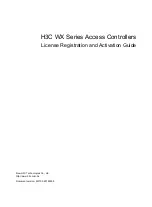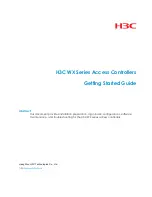
3. Safety instructions
8
3. Safety r egulations
3.1 Identification of safety instructions
Gardner Denver cannot be held liable for any damage
or injury resulting from of the failure to observe these
safety instructions or negligence of the usual care and
attention required during handling, operation,
maintenance or repair, even if this is not explicitly
mentioned in these operating instructions.
If any of the regulations contained in these instructions -
especially with regard to safety – does not correspond
to the local legal provisions, the stricter of the two shall
prevail.
These safety instructions are general in nature and
apply to various types of machines and equipment.
Therefore some references may not apply to the unit(s)
described in these instructions.
Danger
Passages marked with this sign indicate a risk of
injury to personnel.
Important
Passages marked with this sign indicate a risk of
damage to machinery or parts of machinery.
Note
Passages marked with this sign provide technical
information on an optimal cost-effective use of the
machine.
3.2 General safety instructions
Organizational measures
The operating instructions must be kept available at all
times at the place of use of the control (in the tool
compartment or box provided for such a purpose). In
addition to the operating instructions, other generally
applicable legal and other mandatory regulations
relating to accident prevention and environmental
protection must be observed. Such compulsory
regulations may also cover the handling of hazardous
materials or the issuing/ wearing of personal protective
equipment, or traffic regulations.
Instructions regarding supervisory responsibility and
duty of notification in relation to internal factors, for
example regarding work organization, sequences of
operations, duties and responsibilities, shall be
maintained in addition to the operating instructions.
Personnel asked to work on the machine must have
read the operating instructions and in particular the
chapter on safety instructions before starting work.
Reading the instructions after work has begun is too
late. This applies in particular to persons working only
occasionally on the machine, e.g. for setting up or
maintenance.
Regular checks must be made to ensure that personnel
are observing the operating instructions and in
particular the safety requirements
For safety reasons, long hair must be tied back or
otherwise secured, garments must be close-fitting and
no jewellery must be worn. Injury may result from being
caught up in the machinery or from rings catching on
moving parts. As necessary or as required by
regulations, personal protective equipment should be
used.
Observe all safety and warning notices attached to the
control.
Ensure that safety instructions and warnings attached
to the control are always complete and perfectly legible.
If changes to the machine/unit or its operating
behaviour which could have safety implications are
observed, stop the control immediately and report the
fault to the appropriate department/person.
Spare parts must comply with the technical
requirements specified by the manufacturer. This is
ensured by the use of original spare parts.
Follow the prescribed intervals or those specified in the
operating instructions for routine checks and
inspections. For maintenance work, tools and
equipment appropriate to the task must be used.
Personnel must be made familiar with the location and
operation of fire extinguishers. Observe all fire-warning
and fire-fighting procedures. Limit values (pressures,
time settings, etc.) must be permanently displayed.









































